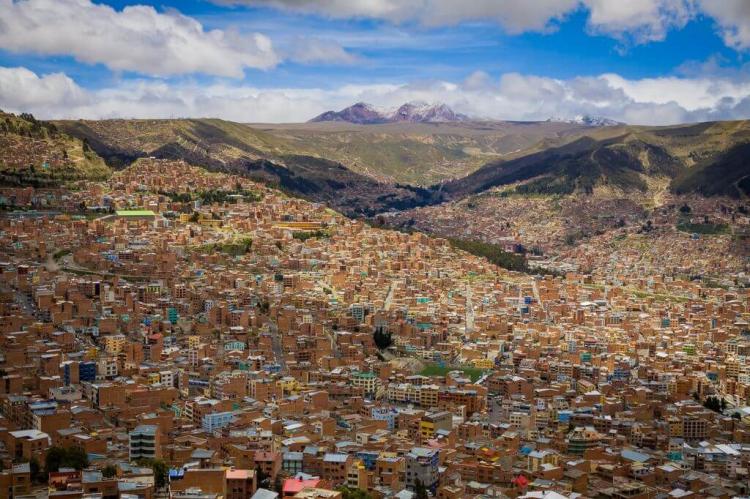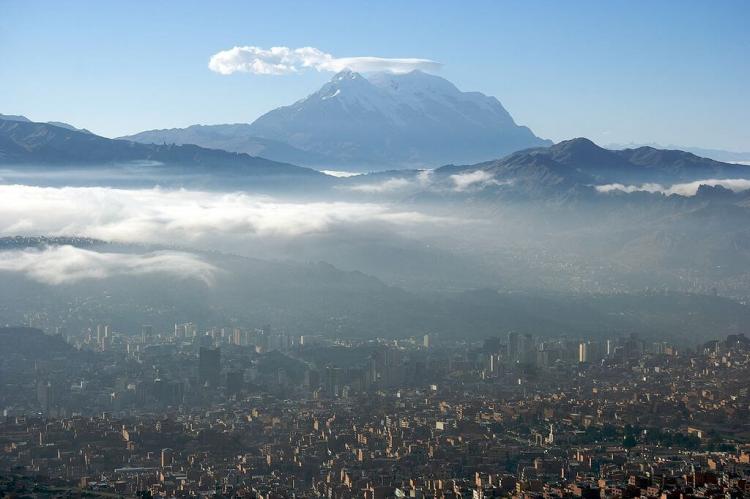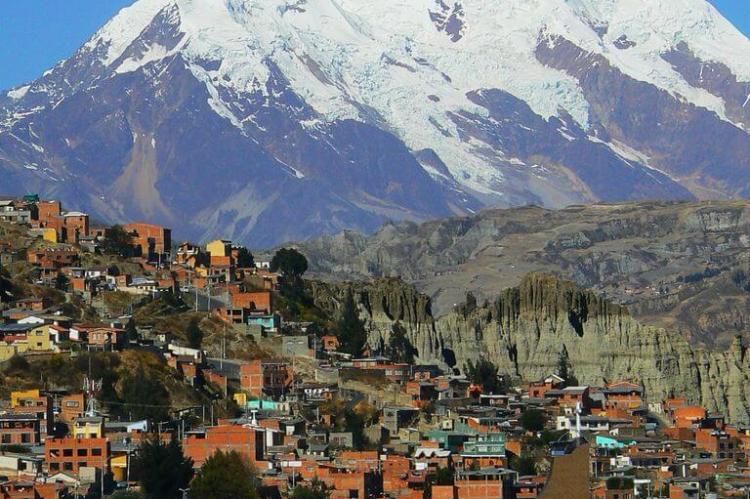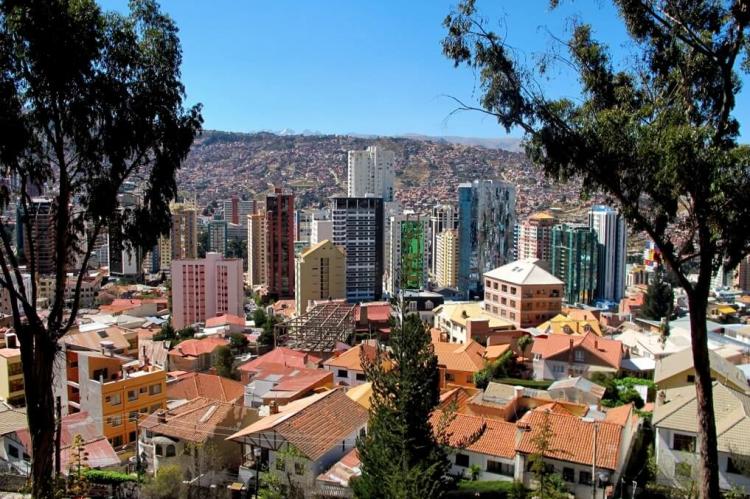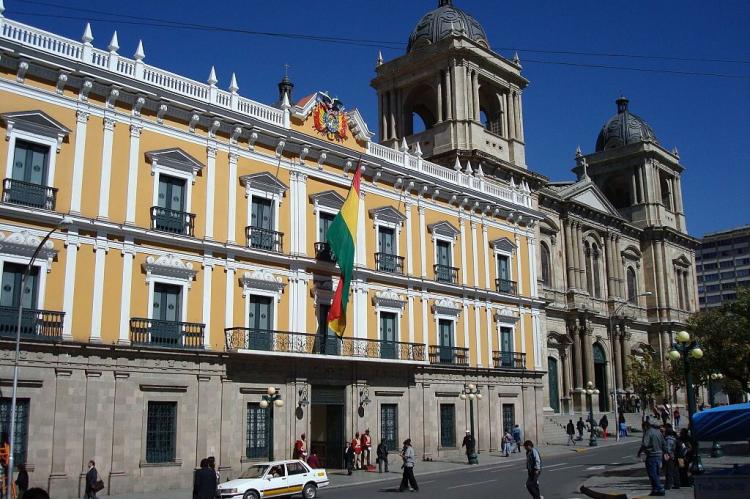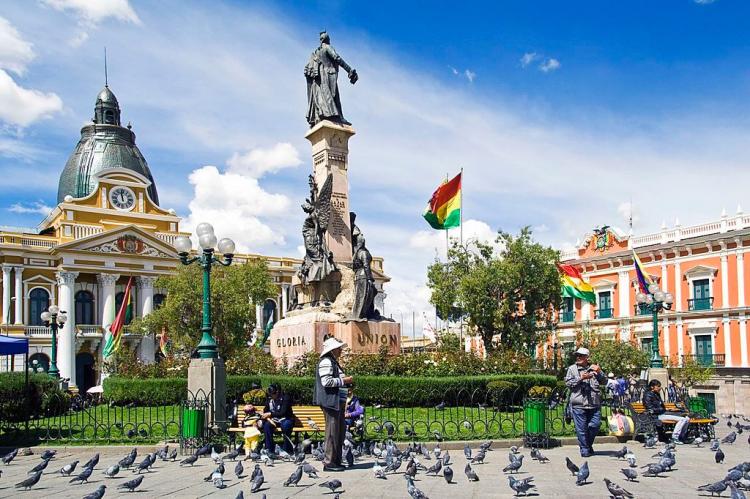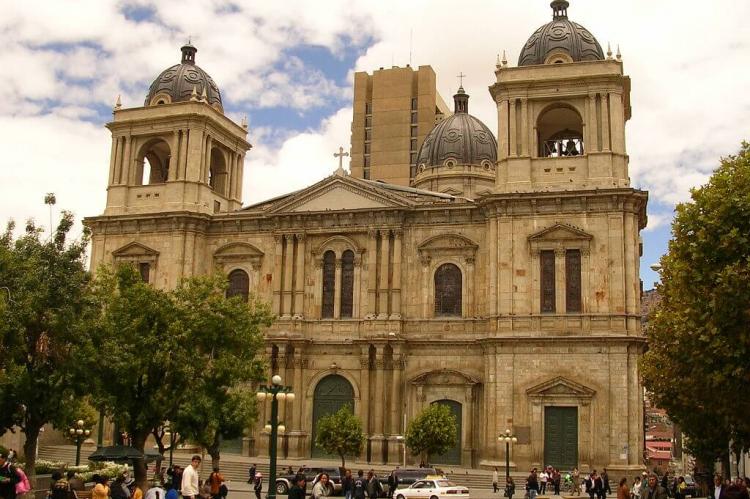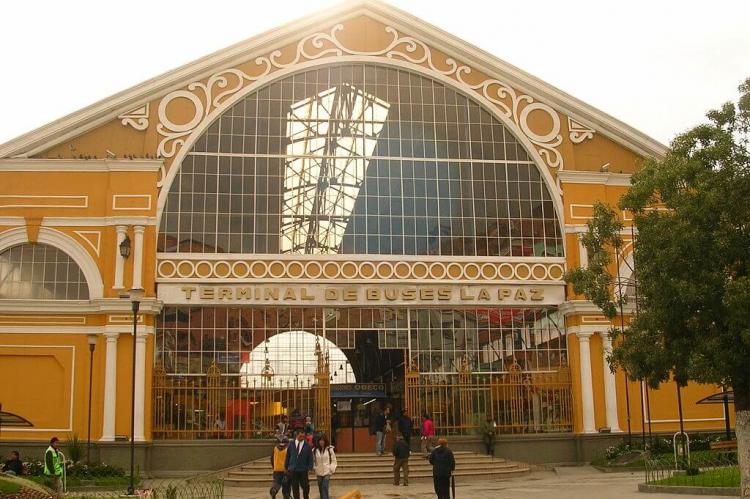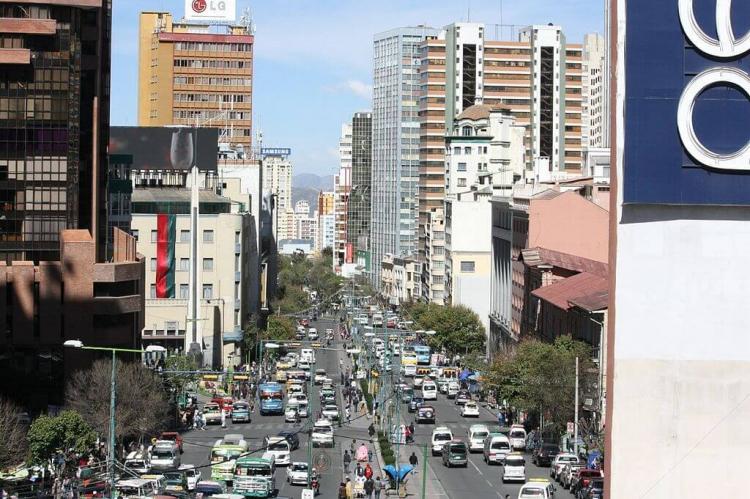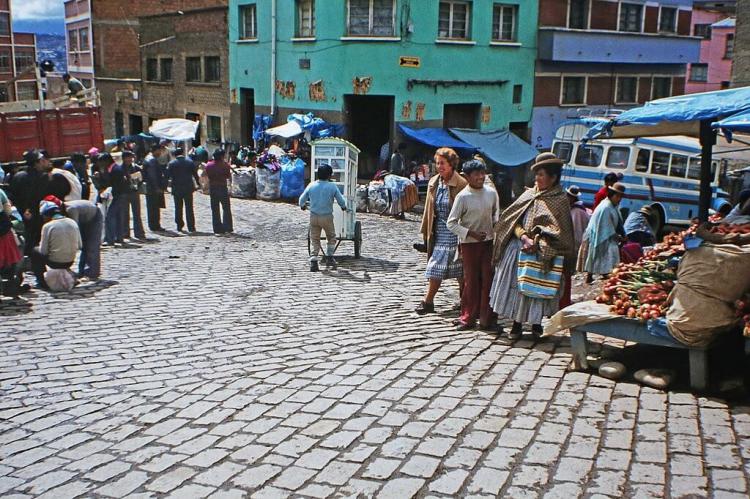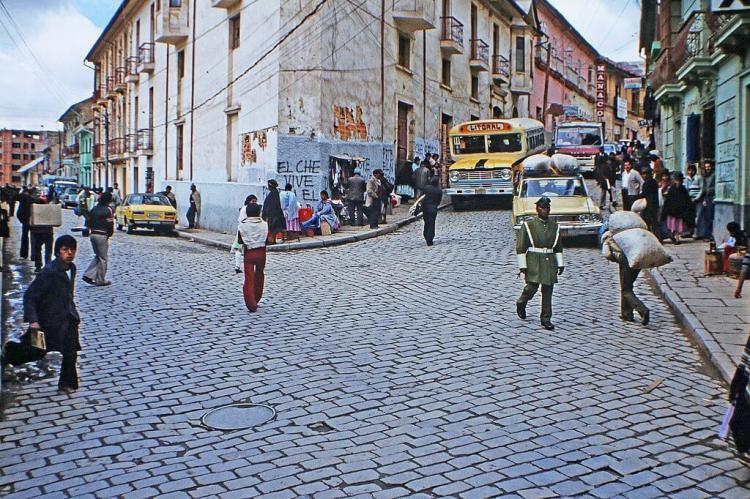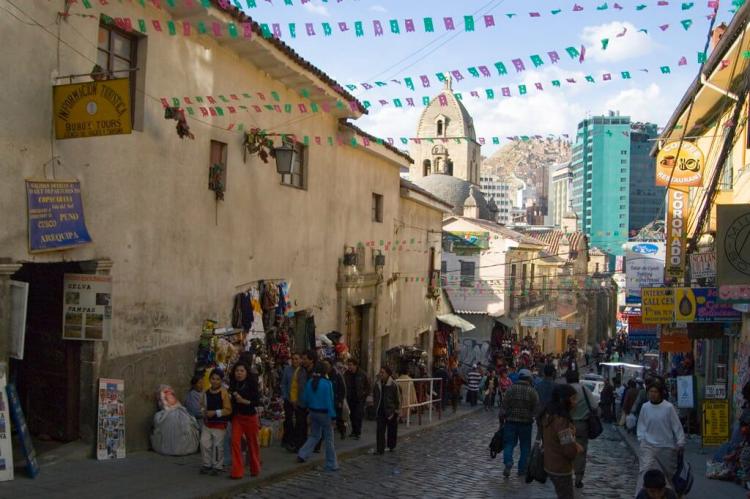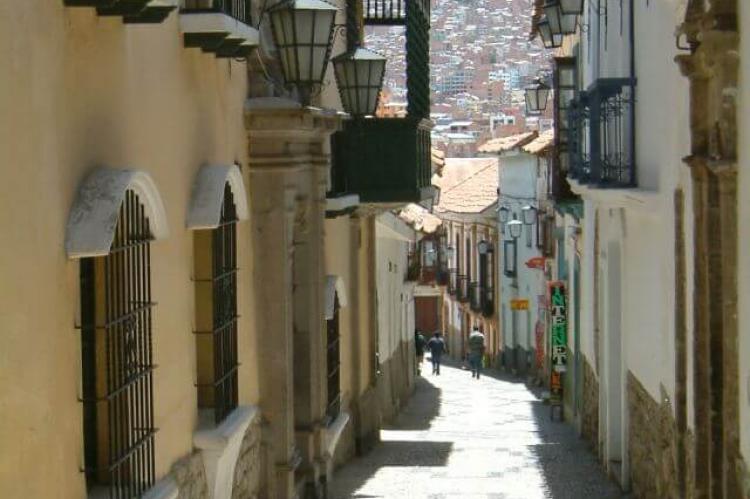La Paz: Bolivia's High-Altitude Metropolis
Nestled amidst the peaks of the Andes, La Paz is a towering bastion of Bolivia's rich cultural heritage, political significance, and unparalleled geographical splendor. La Paz commands attention as the national administrative capital and the epicenter of governmental affairs in the country's west-central region.
La Paz
Bolivia's High-Altitude Metropolis
Nestled amidst the majestic peaks of the Andes Mountains, La Paz stands as a towering bastion of Bolivia's rich cultural heritage, political significance, and unparalleled geographical splendor. It is located in the country's west-central region and serves as the national administrative capital and the epicenter of governmental affairs. The city's altitude and breathtaking surroundings shape its physical landscape and weave a narrative of resilience and determination ingrained in Bolivia's history and contemporary identity.
Geographical Marvel
The geographical marvel that is La Paz is not merely a backdrop but an integral part of its identity. Perched majestically between 3,250 and 4,100 meters (10,660 and 13,450 feet) above sea level, it proudly holds the distinction of being the world's highest national capital. This lofty elevation grants visitors an unparalleled perspective, where the air is thin and the vistas expansive.
Illimani is at the heart of this urban marvel. It is a behemoth of a mountain with three distinct peaks that command attention from every corner of the city. Illimani's presence is a sight to behold and a constant reminder of nature's grandeur. Its snowy peaks are often shrouded in mystery, especially during the city's misty mornings and golden sunsets.
Yet, it is not only Illimani that captivates the eye; the city's very formation within the embrace of the Choqueyapu River's canyon makes La Paz a geographical wonder. Like a natural amphitheater, the city is cradled within this rugged terrain, creating a dramatic landscape of cliffs and slopes that cascade down into the bowl-like depression where the urban sprawl finds its home. This geological feature adds to the city's visual appeal and serves as a natural fortress, providing a sense of protection and isolation amidst the towering peaks of the Altiplano.
Moreover, La Paz's unique topography significantly influences its climatic conditions. The city experiences a subtropical highland climate, where the altitude brings cooler temperatures despite its proximity to the equator. The region's rainy summers and dry winters are characteristic. They are shaped by the interplay of altitude and geographical features, making La Paz a haven for those seeking respite from the sweltering heat of lower elevations.
Historical Tapestry
Founded in 1548 by the Spanish conquistador Alonso de Mendoza, La Paz emerged from the ashes of an Inca village, marking the beginning of a new chapter in the region's history. Originally named Nuestra Señora de La Paz, the city served as a strategic outpost in the vast expanse of the Spanish Empire, linking the Andean highlands with the riches of the lowlands.
Yet, beneath the veneer of colonial rule, La Paz retained the echoes of its indigenous past, with traditions and customs intertwining with those imposed by Spanish conquistadors. The clash of civilizations gave rise to a unique blend of cultures. Quechua and Aymara influences coexisted alongside European customs, creating a melting pot of traditions that still resonate in the streets of modern-day La Paz.
Throughout its history, La Paz played a pivotal role in the struggle for independence from Spanish colonial rule. In 1825, the city was renamed La Paz de Ayacucho in honor of the decisive battle in Peru that sealed the fate of Spanish dominance in South America. This symbolic gesture marked a turning point in Bolivia's history, signaling the birth of a new nation forged in the fires of revolution.
However, despite its newfound independence, Bolivia's political landscape remained fractured. The rivalry between La Paz and Sucre, the nation's constitutional capital, mirrored the tensions between the highland and lowland regions, each vying for dominance in the young republic. While Sucre retained its symbolic significance as the seat of judicial power, La Paz emerged as the epicenter of executive and legislative authority, solidifying its position as Bolivia's de facto capital.
Cultural Melting Pot
La Paz is a city rich in culture and history. It has many colonial-era landmarks, such as the San Francisco Church, the Metropolitan Cathedral, and the Plaza Murillo, that remind us of its storied past. However, the city's true essence is embodied in its people's everyday life. The busy city streets are full of sights, sounds, and smells that reflect the diverse influences that have shaped the city over the centuries.
Jaén Street is a significant place that cannot be overlooked. It is a charming cobblestone street lined with colorful facades reminiscent of La Paz's colonial era. Walking through its winding paths feels like taking a step back in time, where the whispers of history echo through the narrow alleyways, inviting exploration and discovery.
La Paz is known for its architectural wonders and vibrant culture, which is deeply ingrained in everyday life. The bustling markets, where vendors sell everything from traditional textiles to indigenous handicrafts, and the street food stalls that offer tantalizing bites of Bolivian cuisine are just a few examples of the city's lively atmosphere.
In addition, La Paz is a city that enthusiastically celebrates festivals. Whether it's the colorful Carnival celebrations that fill the streets with music and laughter or the solemn processions of Semana Santa that mark the Easter season, each festival is a testament to the enduring spirit of La Paz's people.
The city's urban cable car network is also a major attraction. This marvel of modern engineering provides essential transportation and offers visitors breathtaking aerial views of the city's panoramas. As gondolas glide silently above the rooftops, passengers are treated to sweeping vistas of snow-capped peaks, bustling markets, and winding streets below, providing a unique perspective on the cultural mosaic that is La Paz.
Economic Hub
A robust and diversified industrial sector lies at the heart of La Paz's economic prowess lies a solid and diversified industrial sector. Industries such as food processing, textile manufacturing, and chemical production form the backbone of the city's economy, generating employment opportunities and driving economic growth. From the bustling markets of El Alto to the industrial parks dotting the city's outskirts, commerce reverberates through the streets, fueling the city's economic engine.
One of the key factors contributing to La Paz's economic vitality is its strategic connectivity. Situated at the crossroads of Bolivia's transportation network, the city is a vital hub for trade and commerce. A well-developed network of railways, highways, and air transport links connects La Paz to neighboring countries, facilitating the seamless movement of goods and people across borders. Whether it's the bustling port of Arica in neighboring Chile or the vibrant markets of Peru, La Paz's strategic location makes it an ideal gateway for businesses looking to tap into the lucrative markets of South America.
Moreover, La Paz's status as Bolivia's administrative and commercial capital of Bolivia further enhances its economic significance. Government institutions, financial centers, and corporate headquarters underscore the city's importance as a center of power and influence within the country. From multinational corporations to small businesses, entrepreneurs flock to La Paz in search of opportunities drawn by the promise of a vibrant economy and a thriving business ecosystem.
But perhaps most importantly, La Paz's economic success is fueled by its people's entrepreneurial spirit and resilience of its people. From street vendors selling traditional handicrafts to tech startups revolutionizing the digital landscape, innovation thrives in the city's bustling streets and marketplaces. This spirit of enterprise and ingenuity propels the city forward, driving economic growth and prosperity for future generations.
Conclusion
In conclusion, La Paz is a city of contrasts and complexities, where ancient traditions blend seamlessly with modern innovations, and towering peaks overlook bustling streets below. From its breathtaking geographical setting to its rich cultural tapestry, La Paz captivates the imagination and leaves an indelible impression on all fortunate enough to experience its splendor.
As the world's highest national capital, La Paz's towering peaks and rugged terrain provide a stunning backdrop and shape its unique identity and way of life. Nestled within the embrace of the Andes, the city's dramatic topography has fostered a spirit of resilience and adaptability among its inhabitants, who have carved out a thriving metropolis amidst the challenges of high-altitude living.
But it's not just La Paz's geographical setting that sets it apart; it's the vibrant mosaic of cultures and traditions that define the city's essence. From its colonial-era landmarks to its bustling markets and lively festivals, the city pulsates with energy and excitement, offering a glimpse into the rich tapestry of Bolivia's cultural heritage.
